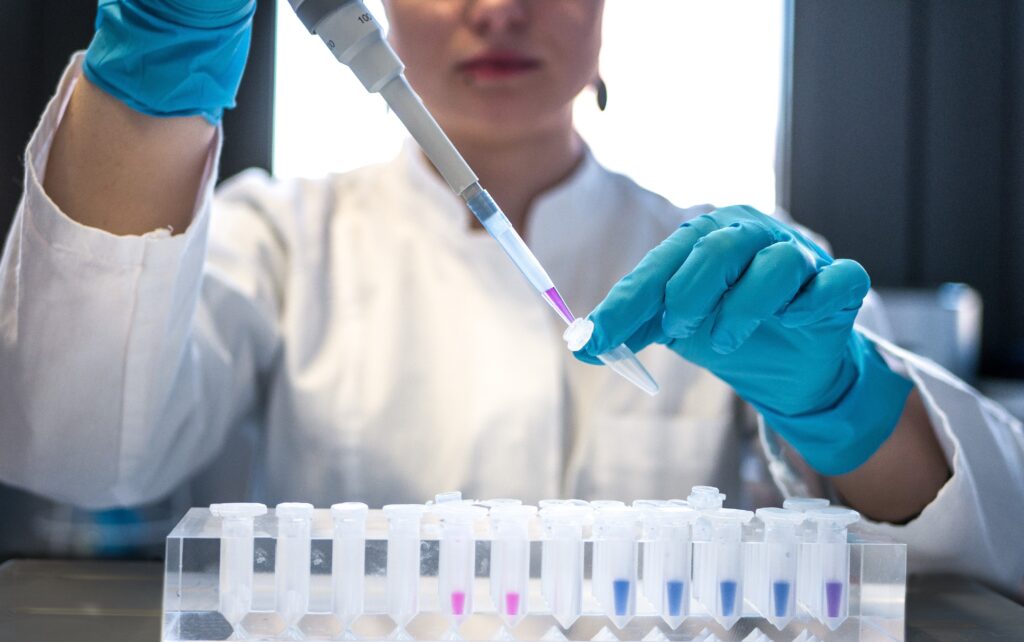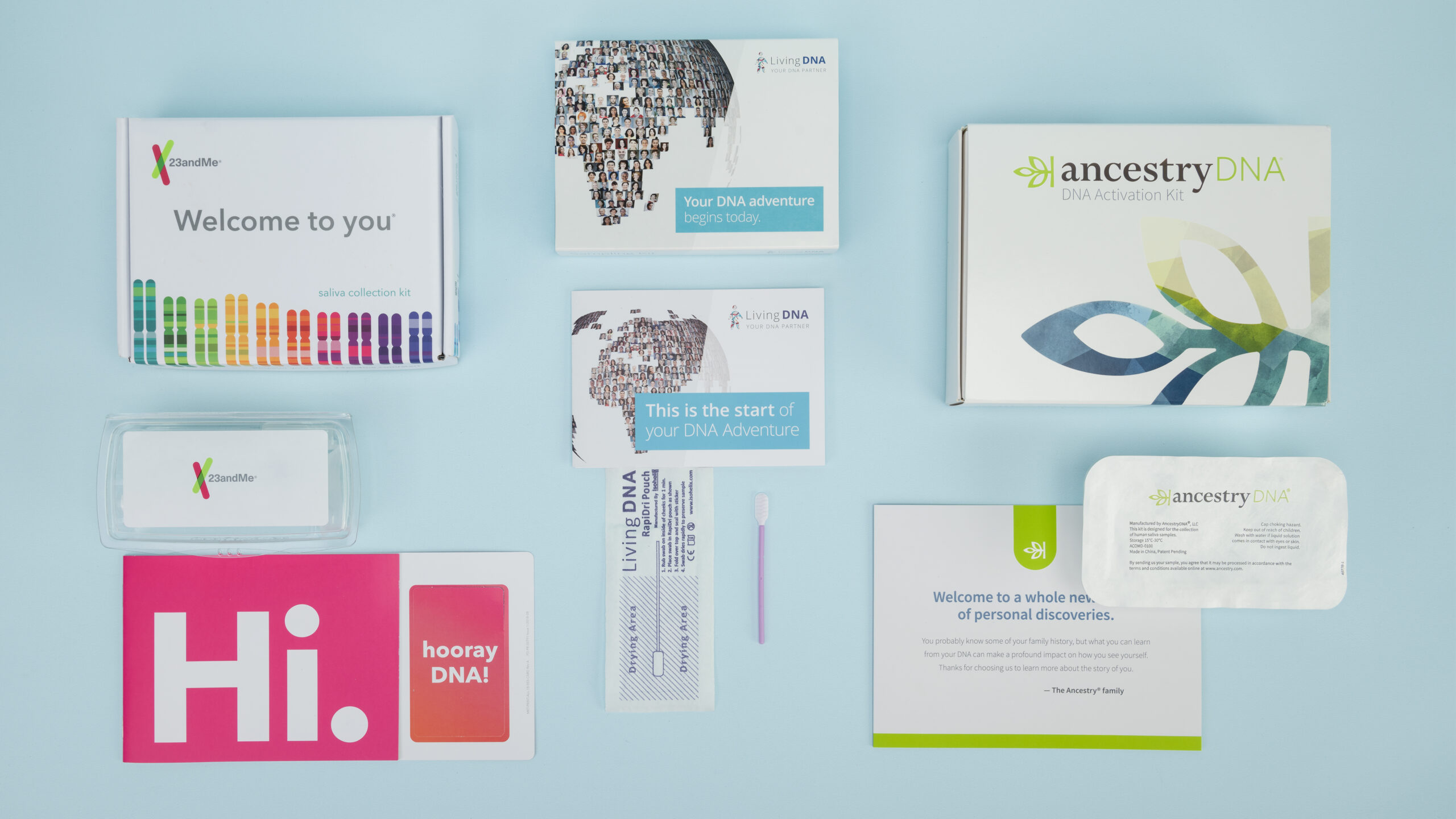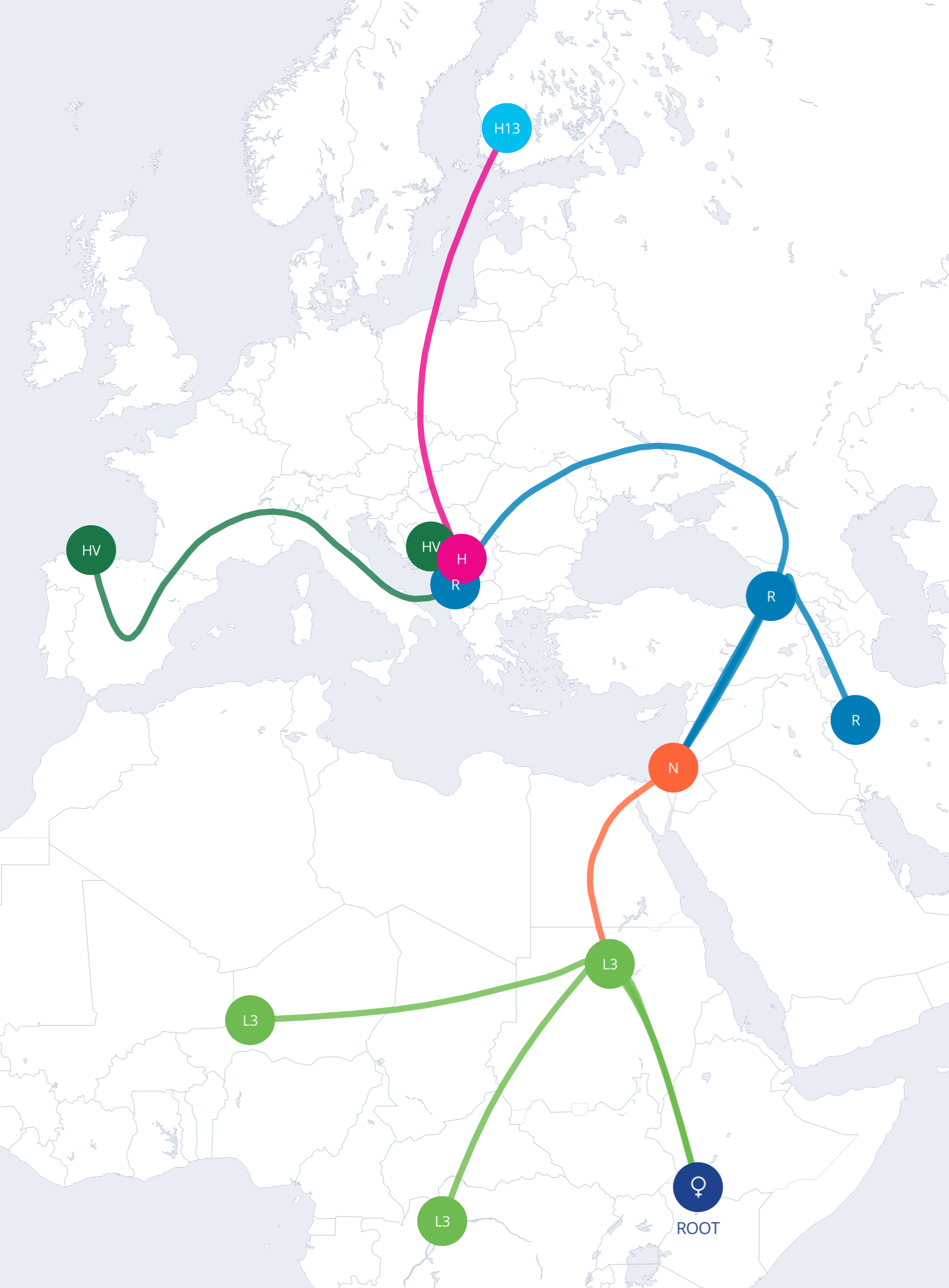

In This Article
In This Article
A mitochondrial DNA test (also known as a mtDNA test) shows your maternal lineage and the DNA you’ve inherited from your mother.
Because mitochondria are usually only passed down by the mother, there is, more often than not, no paternal DNA in mtDNA. While both sperm and egg cells have mitochondria in them, the mitochondria in the sperm cells are destroyed when the egg is fertilized.1
This type of DNA mutates at a slower pace than Y-DNA (DNA from a father) which means it’s easier to find ancestors further back in your bloodline than it would be with another sample.

Inside the cell, there is an organelle called the mitochondria. They have their own DNA, called mitochondrial DNA, which is DNA located only in your mitochondria.2
Children inherit mitochondrial DNA from their mothers. The mitochondria of the sperm cell is destroyed during fertilization because the egg cell has all its organelles already, while the sperm cell’s primary focus is delivering DNA rather than organelles. It carries most of its mitochondria in its tail and is often not fully integrated and degrades.3
Egg cells already have mitochondria present in them. When a sperm cell fertilizes it, it retains its mitochondria. This is why you can trace your maternal line through your mitochondrial DNA.
Know Your DNA Reviews

Don't miss out on the opportunity to learn more about yourself. Read our best DNA test page to find the best one for you.
Your mitochondrial DNA can tell you more about your maternal line. Because your mitochondria is passed down from women in your lineage, it can trace female ancestors through your mitochondrial haplogroup.2
They also contain instructions for important processes in the production of enzymes and adenosine triphosphate (ATP).

Source: 123rf
Before people started migrating from where they were born, their unique mitochondrial structures remained the same among their relatives. Any mutations or changes could still be tied to their families.4
Once people started to leave their home countries, they still carried those same mitochondria with them and then continued to pass them on.
mtDNA can trace your maternal line by identifying which mitochondrial DNA look identical to or similar to yours and can even determine where your line may have originated from.
There’s a possibility that you can determine a specific female ancestor if their mitochondrial DNA matches up with yours pretty closely. However, there isn’t always a guarantee.
Mutations can happen, and sometimes there isn’t enough data to back up any claims.

Source: 123rf
There are several ways to use mtDNA.
There are very few changes that occur over time with mtDNA. Because of this and because it remains purer than Y-DNA, researchers have an easier time using this type of DNA to trace a person’s mother, grandmother, great-grandmother, etc.
Take note, however, that these mutations are important. If they didn’t mutate, it would be impossible to differentiate maternal lines given the identical mtDNA. So those little changes are key to finding genealogical matches.
One of the most beneficial uses of mtDNA is to identify someone’s biological mother or biological maternal relatives after a closed or anonymous adoption.
If an adoptee wishes to search for his or her family, mtDNA matches make it easier to identify their biological mother.
Mitochondrial DNA offers information about a person’s geographic and ethnic origins. Again, the results are highly accurate because there is so little change in this type of DNA, so mtDNA that matches yours can point to a geographic origin.
Your mtDNA could reveal if your maternal line hailed from Europe, Africa, or Native America, among other places.
Y-DNA can be used in this way too, but researchers believe the results are unlikely to be as accurate. Both Y-DNA and mtDNA have haplogroups. These groups provide a path through ancestral origins and allow you to link your DNA to a particular genetic family tree.

Source: 123rf
mtDNA is pretty accurate, but, like all DNA testing, problems and errors can occur.
Still, despite the potential for error, mtDNA has proven to be pretty precise.
Because mtDNA undergoes very little change, it can be difficult to identify a genealogical timeframe.
You might know that your maternal line was in Europe, but because the DNA is practically the same now as 300 years ago, it might be difficult to know exactly when your family was in that region.
Likewise, because everyone on the maternal side shares the same mtDNA, it’s difficult to identify which female within a line is the common ancestor.
A mitochondrial DNA test shows two people are maternally related, but it wouldn’t show you if the people with matching DNA are mother and daughter, sisters, distant cousins, aunts and nieces, etc.
Yes, there are several DNA tests exclusively for mtDNA.
There are different types of DNA testing, and mtDNA testing is just one of them.
Depending on where you get it done, the DNA sample the company or at-home test requires may differ. Some may require cheek swabs, and others may require blood samples.
After the DNA sample is collected, it will be examined. They will take a look at certain base pairs in your DNA, either at the beginning or the end of the strand (sometimes both). Other times, if they want further confirmation, they will also look at the coding region.5
Once they get all that information, they can then determine which of the autosomal matches are on that line and look for ancestors within a recent genealogical timespan.
You can also collaborate with mtDNA cousins and autosomal cousins to assemble a family tree and look for common maternal ancestors.

Source: 123rf
One of the most important things to remember is that if you are conducting genealogical research, mtDNA results alone likely won’t be enough to give you the comprehensive view of your ancestry you want. But paired with traditional genealogical evidence and the help of a genetics expert’s opinion, it can help you round out your family tree.
No. Paternal DNA testing traces someone’s paternal ancestry.
This means it looks at DNA that has been passed on from the subject’s father, which is also known as Y-DNA. It’s called that because it analyzes the Y chromosomal DNA, which is only present in males.
To conduct paternal DNA testing on a female, you’d need to also test the subject’s father, brother, or grandfather.
This makes it possible to establish a genetic pattern that is then used to analyze the father’s side of the family.
There are similarities between mtDNA testing and paternal DNA testing. For example:

Source: 123rf
Both mitochondrial DNA testing and paternal DNA testing show evidence of a genetic relationship.
Paternal DNA testing is about 99.9 percent accurate in identifying a subject’s father or excluding a man as the father 100 percent accurately. But it can identify a subject’s mother.
Likewise, mtDNA testing can identify a person’s mother and even further back through the matrilineal bloodline, but it can’t tell a person anything about his or her father.
Mitochondrial DNA is different from nuclear DNA because mtDNA is inherited only from your mother, while nuclear DNA is a contribution of both.
Mitochondrial DNA is circular in shape, unlike nuclear DNA, which is linear. It is also smaller and has fewer base pairs compared to nuclear DNA.
Know Your DNA Reviews

Looking for a DNA test that's accurate and can tell you about your health and heritage?

